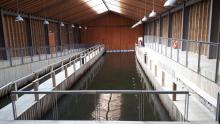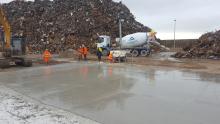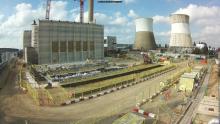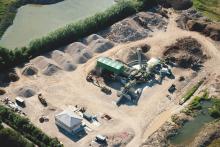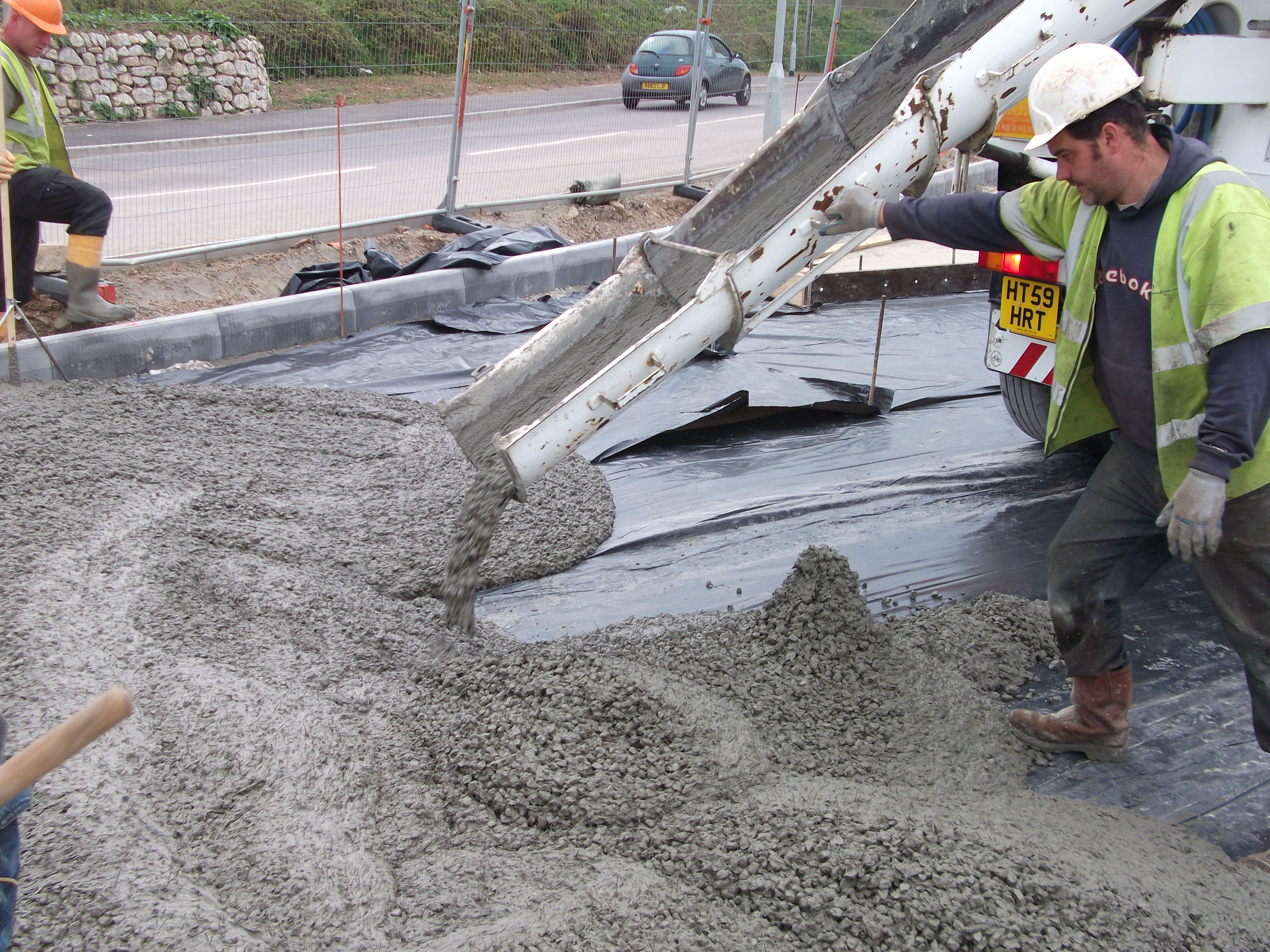
From January 2018, Chinese restrictions came into force banning millions of tonnes of plastic waste traditionally exported from the UK – a move set to dramatically increase the volume of waste for domestic treatment. As local authorities struggle with the lack of large-scale disposal and recovery infrastructure available, a rise in the construction of Household Waste Recycling Centres (HWRCs) and Energy from Waste (EfW) facilities looks imminent.
Here, David Porter, area manager for RMX in the East Midlands region at
For decades China has been importing millions of tonnes of plastic rubbish every year to make consumer goods such as toys, mats and parts which it then sells back to the rest of the world. However, in July last year the Chinese government announced it would ban imports of the world's plastics from January 2018 as part of a drive towards self-sufficiency and in order to prevent environmental contamination.
For the UK, which exports more than half (55%) of its scrap plastics to China and Hong Kong, the ban is considered a ‘game-changer’ for the waste management industry amid predictions it will increase the domestic waste we have here in the UK for treatment by 500,000 tonnes each year.
With the availability of landfill shrinking and as local authorities struggle with the lack of large-scale disposal or recovery infrastructure to process this waste, many have already embarked on a programme of building more Household Waste Recycling Centres (HWRCs) and Energy from Waste (EfW) plants.
Although these waste management sites may vary in both size and purpose, one thing they all have in common is the vast catalogue of gruelling industrial processes that take place on a daily basis – making their construction inherently complex and defiant of a ‘one-size-fits-all’ approach.
Energy for Waste (EfW) plants, for example, must be ready to incinerate clinical and chemical wastes including hazardous and corrosive liquids, gases and solids at temperatures as high as 1200°C via an intricate system of shredding, mixing and pumping.
Such plants may require more specialist construction materials and methods than say a HWRC, which is heavily reliant on mechanical processes such as magnetised sorting and compacting machinery, making much of the facility an aggressive environment where durability of construction is the overriding aim.
For building contractors, constructing a waste management facility often involves tendering for a private finance initiative (PFI) with local authorities, where they agree to take on the building, management and maintenance of the waste management facility for at least a 25-year period. As such, this means they are under increasing pressure to deliver these incredibly intricate infrastructure projects within limited budgets and timeframes.
Consequently, with industrial heavy-duty processes making such structures more susceptible to wear and tear, a key objective of constructing waste management infrastructure is the need to ensure longevity and reduce the long term maintenance costs.
Core to meeting these unique design challenges is a two-pronged approach to concrete specification; one that combines innovative building materials with specialist expert knowledge.
With today’s bespoke mixes taking concrete to a whole new level, the good news for waste management developers is that leading manufacturers have responded with a growing range of cutting-edge solutions designed to meet even the most difficult of briefs.
A good example of this is Aggregate Industries’ Highpave solution, a range of fibre reinforced pavement grade concrete. This product has been specifically designed to withstand mechanical force whilst also reducing the errors associated with the use of conventional reinforcing methods – making it the ideal solution for waste management applications.
Offering excellent workability, enhanced compressive strength and rapid setting times, Highpave can help to eliminate the risk of corrosion while minimising construction time and costs.
Testament to its benefits in waste infrastructure, Highpave was recently used in the construction of a new refuse transfer station in Redruth, Cornwall, where it proved the perfect fit for contractor Dyer and Butler when it came to building an ultra-durable structure that could withstand the facility’s extensive mechanical processes.
Another solution pushing the boundaries of construction design in waste management is Aggregate Industries’ Diamondcrete, a range of long-wearing and high-performance ready-mixed concrete that lasts up to four or five times longer than conventional concrete, giving the added bonus of improved sustainability.
Best known for its superior toughness and enhanced resistance to corrosive substances such as sulphates and acids, this solution is regularly used in the construction of high-traffic areas such as the tipping courtyard of a waste transfer station, where often the waste is received, compacted and loaded onto larger vehicles for shipment to a final disposal site.
Again highlighting the importance of correct concrete, Diamondcrete proved vital in the high-profile construction of Cornwall Energy Recovery Centre (CERC) at St Dennis – the first major waste management project in Cornwall.
Due to its low water-cement ratio and very rapid access, Diamondcrete was the obvious answer, when Aggregate Industries was called upon by building contractor Vinci to specify concrete to ensure the ground slab was not only durable but could also be loaded for trafficking as quickly as possible.
Although tailored concrete solutions form the cornerstone of achieving a client’s challenging specifications, not to be overlooked is the importance of using a supplier with the extensive experience, technical expertise and on-site assistance to ensure the successful completion of a project – especially when things go wrong.
A great example of this is the part that Aggregate Industries’ expert advice and on-site troubleshooting played during the construction of the EnviRecover incinerator plant on the Hartlebury Trading Estate, near Kidderminster.
At a whopping 32-meters high, in order to build such an imposing structure Aggregate Industries were called upon to supply 4,100m³ of a well-formulated high-strength concrete mix to one of the largest slip form projects outside of London.
The nature of the continuous slip-form pour meant that once the process had begun, the concrete supplies could not stop at any point without risking the structural integrity of the building and large cost implications for those involved.
As such, contingency plans were meticulously organised by the Aggregate Industries team to ensure the continuous slip-form could be maintained over the 14 days. This included backup water, electricity, mixer and tipper truckers that remained on call in case of any breakdowns. The company also ensured there was a skilled team of staff available at all-times including technical representatives, supply chain representatives, operators and operational managers, who were all on 24 hour standby.
Crucially, by being able to adapt the concrete mixes where necessary, the contingency plans meant the team were able to respond quickly during an incident when problems with the machinery meant the slip-form failed to pull up correctly – and more importantly ensured the project reached a successful conclusion.
With the UK’s waste management landscape facing its biggest shake up in decades, building contractors are under mounting pressure from local authorities to deliver ever-complex and cost-effective infrastructure to meet the rising demands of domestic waste treatment. At the heart of this is taking a tailored approach to concrete specification, where an experienced building materials supplier could prove their weight in gold when it comes to helping contractors to leverage the latest cutting-edge innovations in durability and impact resistance in order to meet the specialist requirements of waste management applications.

